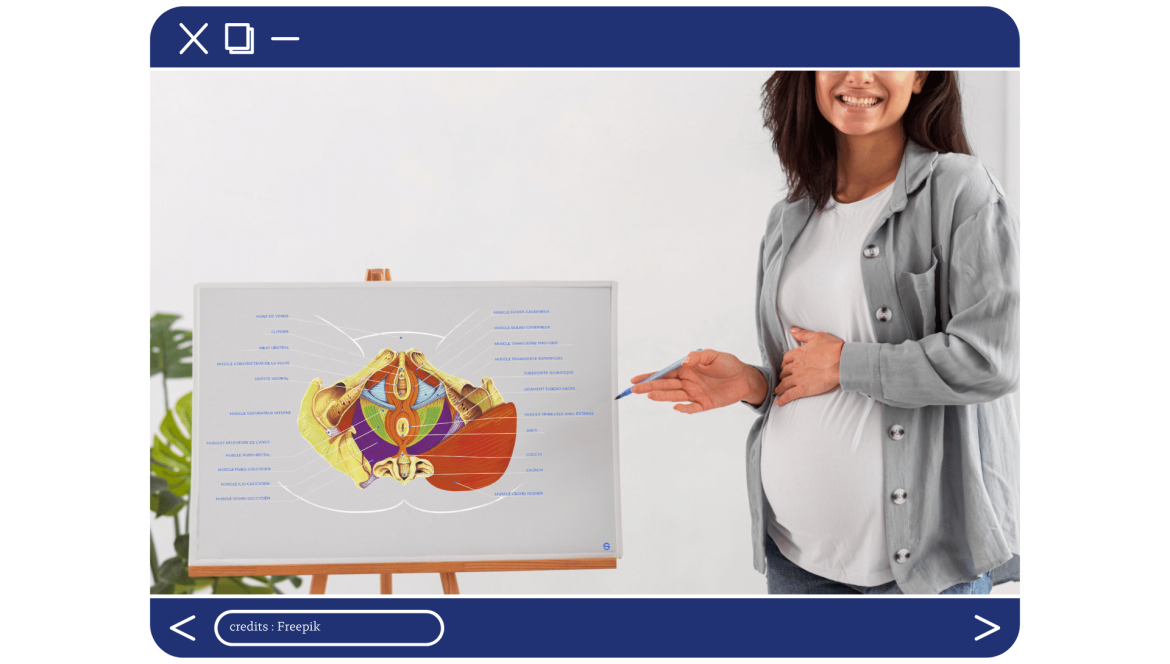The pelvic floor in women

Discover the importance of a strong pelvic floor for women's health.
This group of muscles and tissues plays a crucial role in continence, sexuality and pregnancy.
Learn how to strengthen it to prevent common problems such as incontinence.
The pelvic floor in women
The pelvic floor is a group of muscles and tissues in the pelvis that support internal organs such as the bladder, uterus and bowel.
It is important for urinary and faecal continence, sexuality and pregnancy. Women can strengthen their pelvic floor by performing various exercises.
Problems such as urine leakage can be caused by a weak pelvic floor and can be treated with strengthening exercises or sometimes medical interventions.
Here is a brief description of the different organs that make up the pelvic floor.
- Bulbocavernosus Muscle : It can be trained and strengthened by Kegel exercises, which involve regularly contracting and relaxing the muscle.
- Ischiocavernosus Muscle : This is a powerful muscle. It is important to stretch it regularly to maintain its flexibility and prevent injury.
- Urogenital Diaphragm : It can be weakened by ageing, pregnancy, childbirth, chronic constipation and certain diseases such as prostate enlargement or adenoma (in men).
- Perineal-transverse muscle : This is the area between the anus and the genitals. It is responsible for maintaining the integrity of the pelvic floor and helps control the release of urine and faeces. It also plays a role in sexual function, contracting during orgasm in both men and women.
- Pelvic Diaphragm : Found in both men and women, it is a flat, diamond-shaped muscle located in the pelvic region.
- Suspensory ligament : It plays an important role in clitoral erection during arousal and coitus. It is also important for hip and leg stability, particularly during flexion and extension movements.
- Clitoral glans : This is the visible, external part of the clitoris, a female sexual organ located on the anterior-superior part of the vulva, between the labia majora.
- Opening the urethra : The opening of the urethra can be prone to certain infections and other health problems. In women, it can be subject to certain anatomical anomalies, irritations and even infections.
- Vagina : It is the female sexual organ. The vagina is not a cavity in the true sense of the word, but a virtual cavity. It is the organ of copulation and the route for vaginal delivery. It ends around the cervix, forming 2 cul-de-sacs. It is a muscular tube that connects the uterus to the outside of the body. Of course, it is through the vagina that babies pass during childbirth.
- Pelvic bone : It connects and articulates the lower limbs to the vertebral column. It includes bones such as the sacrum and coccyx (insertion points for the perineal muscles) and the genito-recto-urinary organs. The pelvic bone plays an important role in the stability of the trunk and body, as well as in walking and maintaining balance.
- Anal sphincter : It is a set of sphincter muscles that control the storage of faeces. The anal sphincter is a muscle that surrounds the anus and controls bowel movements and defecation.
- The anus : It is located at the lower end of the digestive tract (rectal ampulla), which it closes off. Its controlled release allows faecal matter (stools) to be evacuated.
